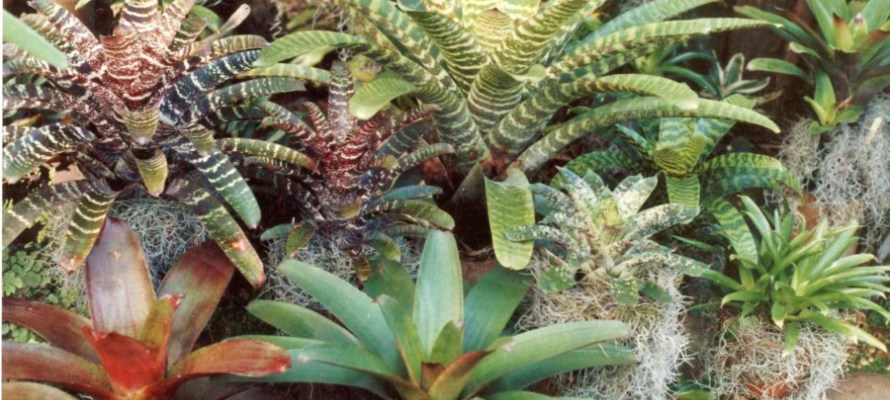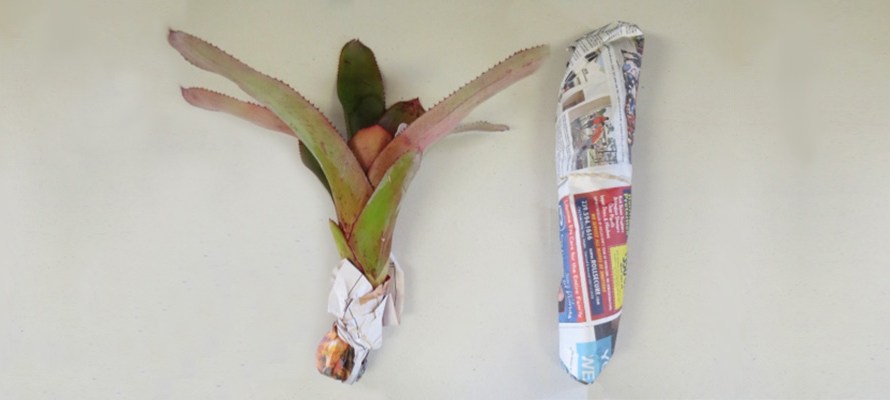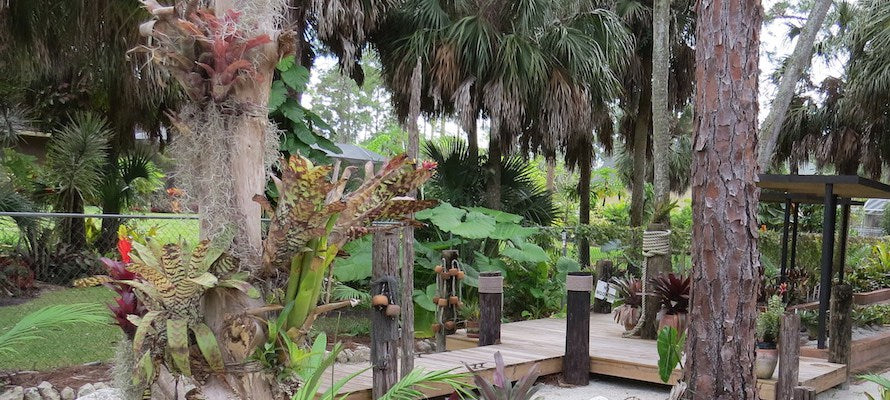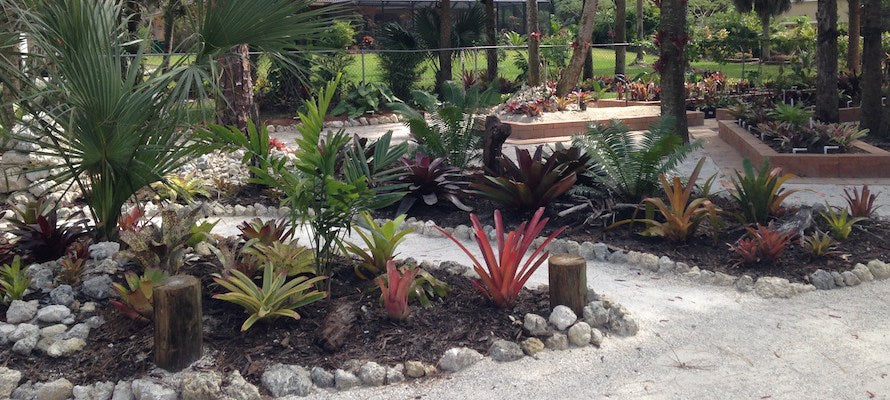Your Cart is Empty
Get Free Shipping on all orders $120 or more.

How should I repot my Bromeliad?
Bromeliads should be repotted in a pot large enough to keep them from tipping over but small enough to allow the roots to ‘breathe’. A general rule of thumb is as follows:
Be aware that a mature Aechmea is a fairly top heavy plant and will tip over in a standard plastic pot. Make sure the pot is well weighted.
What kind of potting mix should I use?
This depends on the type of bromeliad but for most commonly cultivated bromeliads, they like a light, well-draining mix. One of the standard recipes in use by many growers is to make a mix of equal parts of (1) mulch/pine bark nuggets, (2) perlite and (3) composted peat or professional potting mix (a soil-less mix). You want the medium to be able to be moistened easily but drain well. A commercial mix for either orchids or cactus usually works well.
Most epiphytic (growing on other plants) bromeliads do well in this loose, organic medium but terrestrial bromeliads do better in a mix that retains a bit more moisture.
How much water do they need?
First, will your plant be inside or outside? If outside, how much rain will it receive? Bromeliads that have a rosette of overlapping leaves that retain water (often called “tank bromeliads”) should have the rosette kept full of water. Distilled water or rainwater is generally better than tap water (especially if you have hard water). It is a good idea to empty or flush the tank every couple of months and refill it with fresh water. This will clear out organic debris and lessen any chance of fungal rot. In nature, these plants have evolved to catch organic matter, which rots, fertilizing the plants. In cultivation, growers like to keep their plants tidy and debris-free and supplement them with fertilizer to make up for the nutritional loss. Keep the soil around the bromeliad moist (but not wet). This is especially important for non-tank bromeliads as they draw their moisture primarily from their roots. A good rule of thumb is water your bromeliad about once a week. More where humidity is low, less where humidity is high.
How much light do bromeliads need?
That depends a lot on the type of bromeliad. Knowing the genus that the plant belongs to within the bromeliad family can tell you a lot about its requirements. A simple rule of thumb that works for most cases is: “Soft leaf – soft light, hard leaf – hard light.” If the leaves of your plant are soft and flexible and especially if they are spineless (like Guzmanias and Vrieseas), they probably grow in the shady understory in the wild and would do best in a lower light area. Those plants with stiffer (usually spiny) leaves (like Aechmeas and Neoregelias) or “air plants” like Tillandsias enjoy bright, filtered light. There are some plants that will tolerate full sun like Aechmea blanchetiana but most like a little protection.
Pay attention to your plants and they will tell you if they are unhappy. If a plant is being grown in too little light, it will often lose the bright colors that it had when you bought it. In addition to turning greener (adding chlorophyll) to make the most of the lower light level, many plants will start growing much longer leaves increasing their surface area to compensate. If your plant starts getting “leggy”, try moving it (gradually) to a brighter area. The plant will respond by regaining its color and “tightening up” to form a dense rosette with shorter leaves.
On the other extreme, too much light can be the culprit if the plant’s color starts fading or “bleaching”. If brown, sunburned spots start appearing on the portions of the leaves, it is a clear indication that the plant is getting too much light. Sometimes a plant that should be able to take more light, fades or burns when placed in a sunny area. The plant might have been living in dimly lit conditions before you obtained it. You can work it out into brighter conditions in stages to acclimate the plant.
How do I fertilize them?
Bromeliads are generally slow growing plants that do not need a large amount of fertilizer. The best method seems to be use slow, time-release fertilizers lightly sprinkled around the base of the plant. Never place fertilizer grains directly in the cup of tank bromeliads, doing this will probably burn the foliage and might foster the growth of algae or invite rot. Liquid fertilizer is another good method (especially for air plants that cannot be fertilized any other way). Use 1/2 to 1/4 of the recommended strength and spray several times per season. Flush tank bromeliads occasionally to prevent the buildup of salts that may damage leaves.

When a bromeliad is ordered on-line, it will either be taken as an offset from a mother plant, or it will be taken from a pot. Either way, it is possible that it has already started to grow roots.

Bromeliads are a type of plant called epiphytes, which means that they draw moisture from the air and don’t need to be in soil to survive. While their roots can draw water and nutrients, they typically serve as a plant’s ‘anchor’, attaching and holding it place.

Although mosquitoes are not a pest that can harm your bromeliads, they can become very annoying to everyone around them. Mosquitoes are currently a topic of conversation as common sense and the facts often give way to rumor and sensationalism.